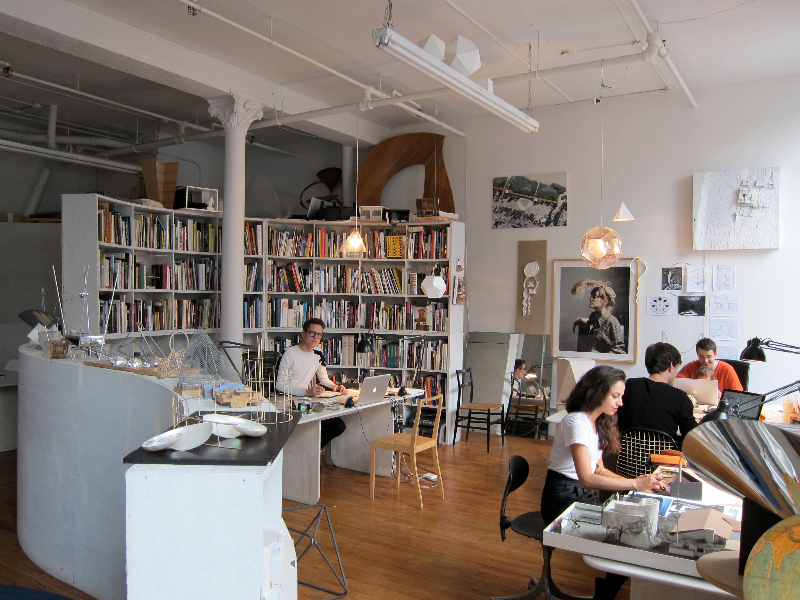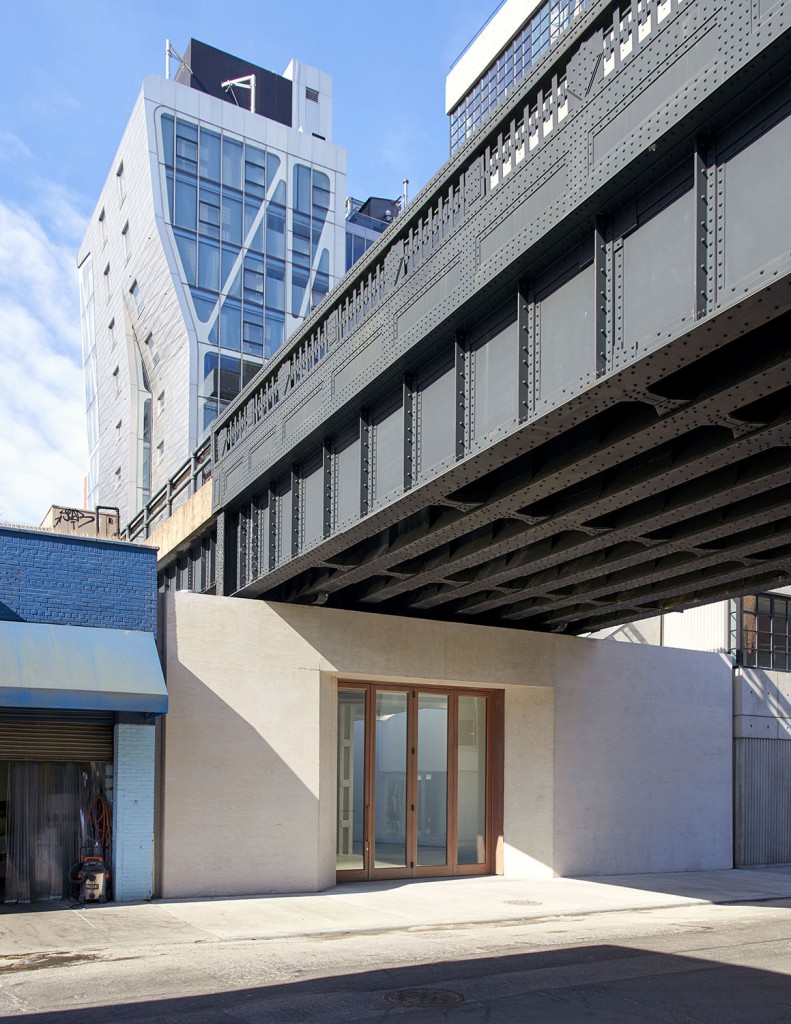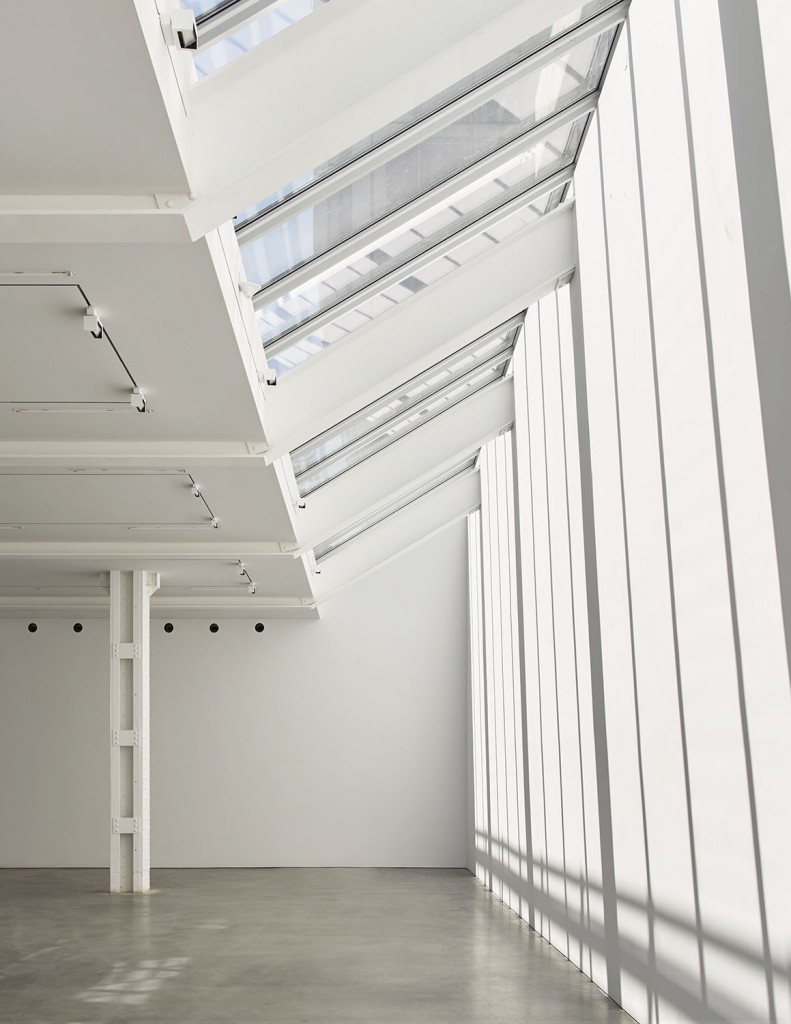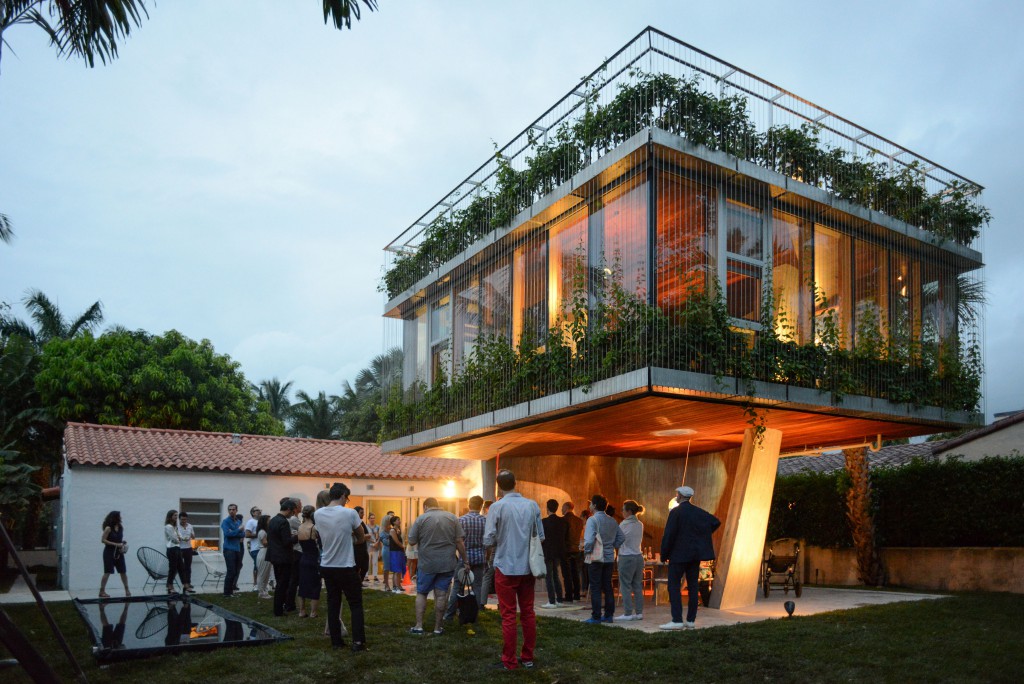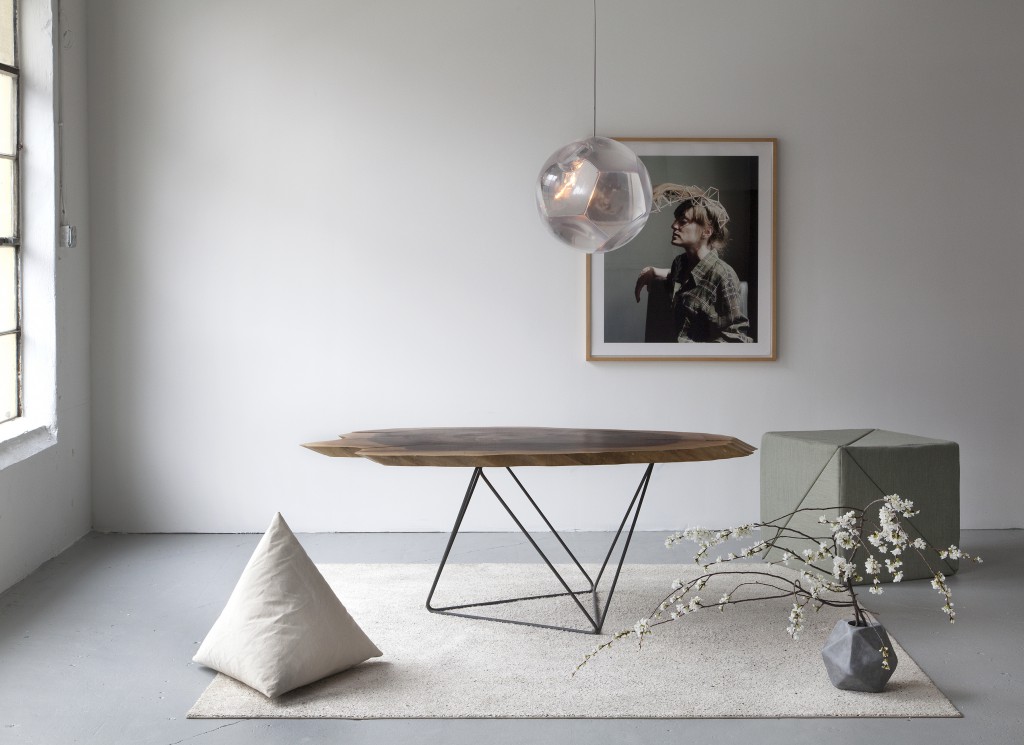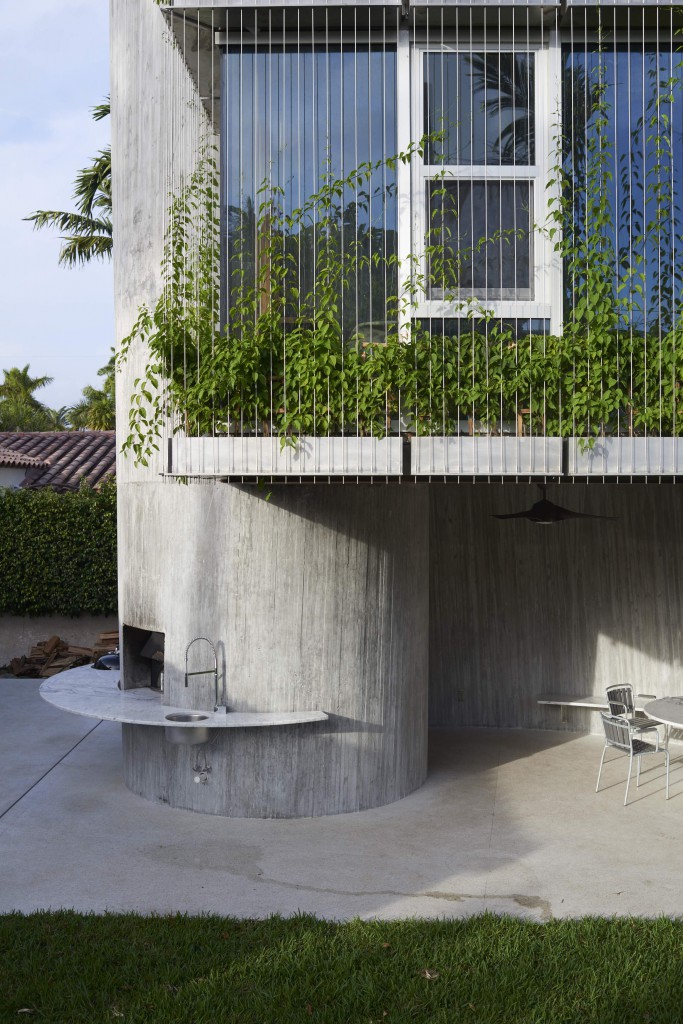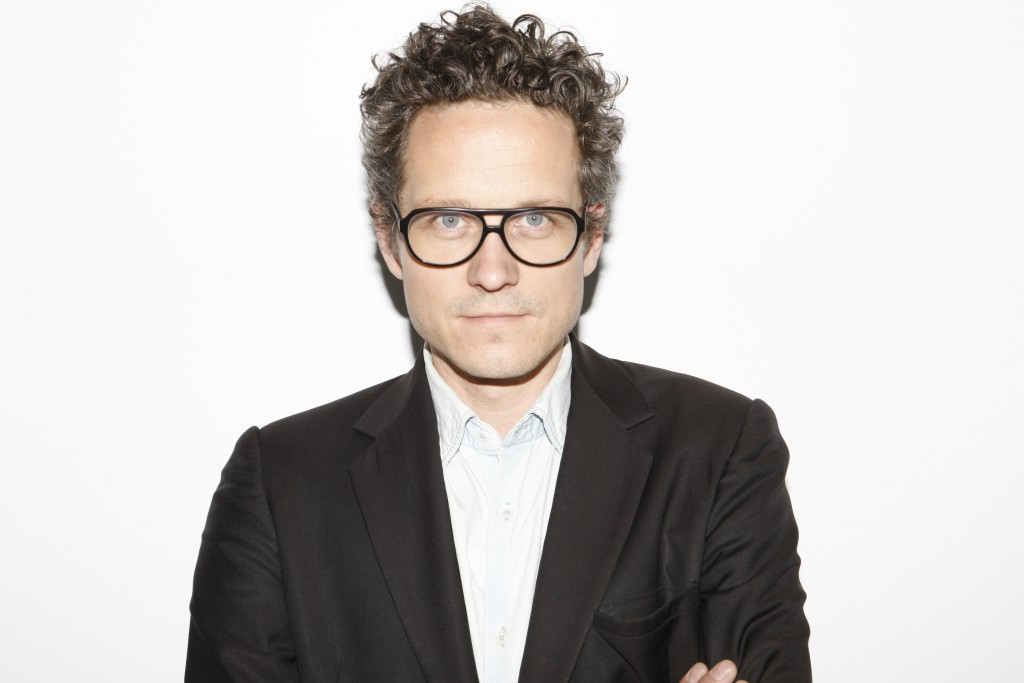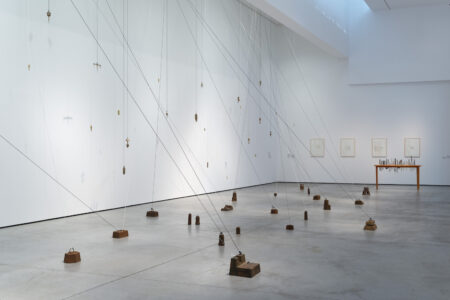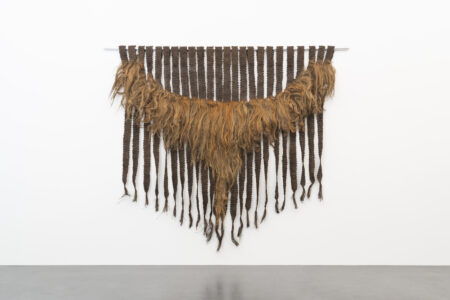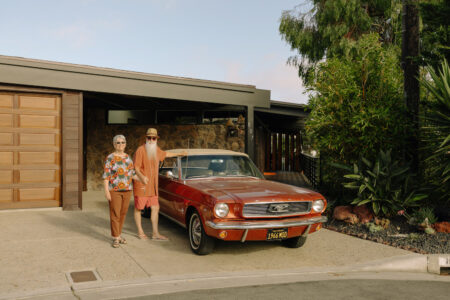Christian Wassmann
Christian Wassmann’s New York studio is something of a cabinet of curiosities. On one wall hang site models oriented in the direction of true north. Other models fill various corners and surfaces throughout the SoHo loft. Sketches, renderings and material samples cover curvilinear walls that snake into office alcoves. Overhead, different iterations of Wassmann’s wildly successful Dodecahedron lamps are suspended in clusters. These clues to projects both past and present are complemented by a well-stocked library that serves as a constant resource for the studio’s endless stream of projects.
Swiss-born Christian Wassmann has gained recognition in different echelons of the creative community. Since founding his practice ten years ago, he has garnered multiple accolades, including a 2010 Swiss Art Award and a 2012 AIA New York New Practices Award. Mentored by powerhouse architect Steven Holl and seminal avant-garde theatre artist Robert Wilson, the cross-disciplinarian has shaped his own ‘form performs function’ approach on the basis of collaboration, experimentation and happy accidents. His affinity for the minimalism of the cosmic sublime can be seen in wide-ranging projects: furniture for galleries such as R & Company, ephemeral fashion shows for the equally experimental label threeASFOUR, scenographies for the Independent Art Fair and permanent buildings like the recently constructed Sun Path House in Miami or the Lisson Gallery in New York, designed in collaboration with studioMDA. TLmag spoke to Wassmann this past February. He and his team were in the midst of finalising their proposal for New Aarch, an open competition to build the new Aarhus School of Architecture in Denmark.
TLmag: What was the concept behind your submission for this project?
Christian Wassmann: Much like our proposal for the Guggenheim Helsinki competition, we looked at ways to harness extreme daylight conditions in the Nordic region. On the shortest day of the year, the sun rises and sets within a 90-degree angle. On the longest day, it spans 270-degrees. We devised a scheme with two superimposed hangars that correspond to these axes. Two crisscrossing arcades – based on Walter Benjamin’s theory of unplanned space – would act as informal pin-up galleries but also filter in natural light at different times of day. Their third function would be to physically, metaphorically and didactically link the lower level workshops with studio spaces and the top-floor auditorium. We employed a similar concept for the Guggenheim Helsinki. Conical shapes – a concept already present in Frank Lloyd Wright’s design for the New York Guggenheim – would have acted as both walls and ceilings. For Aarhus, two perpendicular, reversed hangars would have also followed the sunlight’s axes. While the lower structure would block out natural light and serve as a gallery space, the top structure would bring in natural light and offer sweeping views of the city’s harbour. Auditorium seating and inner and outer stairwells would also be conducive to these forms. For me, architecture should have two, or even three, functions. The Dodecahedron lamps do a good job of this. The optical lens-based chandeliers reverse reflected landscapes, project patterns on overall interiors and create rainbows when interacting with sunlight. When people tell me that the spiral core of the Sun Path House in Miami is sculptural, I understand but still defend its function and sundial-based concept.
TLmag: How do you approach the use of different scales in your process?
C.W.: The first represented a single point, as expressed in the design for the 2012 Independent art fair’s 29-degree Observatory lounge. We oriented the central X-shaped walls on all floors towards Polaris and created a roof pavilion based on the Lesser Bears (Little Dipper) constellation. As with many of my projects, the idea of holistic design is important. The concept should follow through all aspects of the project. The second dimension looked at the extrusion of a two-dimensional diagram into buildings or furniture. The third dimension translated external forces, such as the actual path of the sun in relationship to a specific site, into feasible proposals. The fourth dimension is time. Architecture has the ability to make its users experience time in a physical way, it can amplify spatial rhythms or make us more aware of seasonal changes. The fifth dimension was perhaps the most complex as it addressed experiments and the happy accidents that are so crucial to my practice. Over the years, I learned to not only accept…. we discovered the shapes were already elliptical… At school, I learned to not only accept but also embrace mistakes as part of my process and end results. It’s almost as if I were following the wabi-sabi philosophy. Playing with materials and forms always presents new surprises. When cutting and drying the natural wood for the 5 Platonic Objects tables, we discovered that the shapes were already round. Often, when you work with divine proportions, things always seem to fall into place.
TLmag: How is this ethos informed by your training with Steven Holl and Robert Wilson?
C.W.: I first discovered Robert Wilson’s work when he staged Wagner’s Lohengrin at the Zurich Opera in the 1990’s. I was blown away by the synesthesia of the overture. A single bar moved across a yellow-lit scrim for the entire five minutes. I had never seen such connectivity. In the programme, I read about the Watermill Center and had a journalist friend introduce me to ‘Bob’ a few months later. He looked at my portfolio and invited me to spend the summer with him at this laboratory. At the time, I was studying at the Zurich University of the Arts. Though the school had adopted an interdisciplinary model, it was far from the Black Mountain College I idealised. Watermill was the closest thing I could imagine. I discovered that artists, dancers, choreographers, philosophers and even businesspeople could come together and exchange ideas. The outcome was often a single product, something between theatre, exhibitions and architecture. When I started working at Steven Holl’s office as a young graduate, I was asked to speak up and share my opinion. The idea that a project developed on any scale can derive from different voices, whether it lasts a split second or forever, still has a strong influence on my practice today. For me, New York is also an important factor as it is one of the only places to historically foster that kind of collaborative spirit. Even during the recent recession, our office thrived because of this.
TLmag: Do you still identify with Swiss architecture?
C.W.: It’s hard to say as I’ve lived abroad for 17 years now. I think that Swiss architecture is perhaps more traditional and less open to debate. However, there’s a heightened level of precision that I adhere to. The idea of working with happy accidents – when things collapse – could be seen as Swiss if you consider the work of artists like Fischli and Weiss. However, it’s when I moved to Vienna to study with Wolf Prix that I learned to swim. I was attracted to his Deconstructionist method. He designed a roof extension based on Keith Richard’s guitar riffs rather than using the more accepted reference of a Bach fugue. The idea that inspiration can come from different sources still influences me to this day.
TLmag: What’s the future of Studio Christian Wassmann?
C.W.: Now that we’re ten years old and have formed our approach, we’d like to design more permanent structures. At the same time, it’s important that we don’t lose our voice. As much as private contexts like the Sun Path House allow us to explore different approaches to interaction, architecture is ultimately about achieving broader social good. I still see myself as Modernist in this respect. For me well-designed buildings are shelters but they also should free our minds. Architecture and actually anything manmade ideally helps connect us as individuals to each other, to ourselves, and to the cosmos. Architecture mediates between our body and the environment in a similar way as Franz West’s Pass-stücke (Adaptives) suggest the viewers’ participation. Since my first iPhone my screensaver is a photo of the amazing Bruce Nauman neon piece that reads “The true artist helps the world by revealing mystic truths”. That remains my underlying motto.
